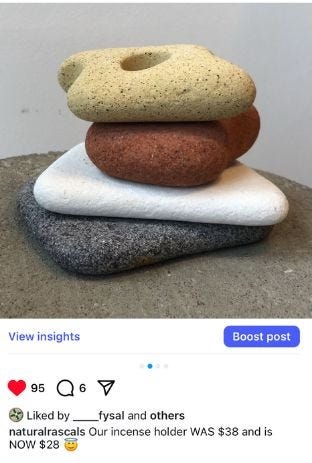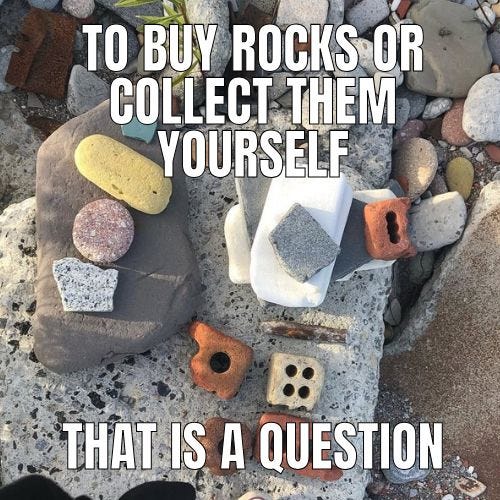The Food Chain of Cool: How Niche Ideas Go Mainstream
Rocks? You’ve seen them in stores by now.
The fact that I am still thinking about these rocks four years later is wild. Here’s the story: when I was building NECESSARY, everything became a resource out of, well, necessity.

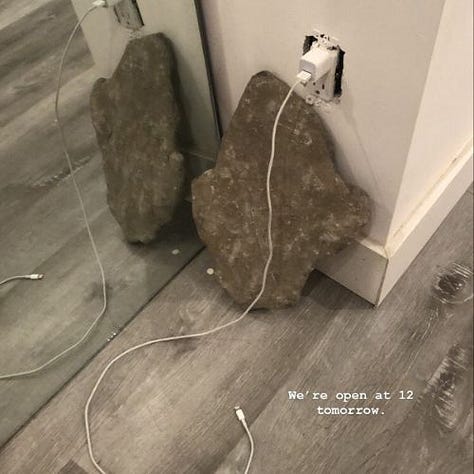
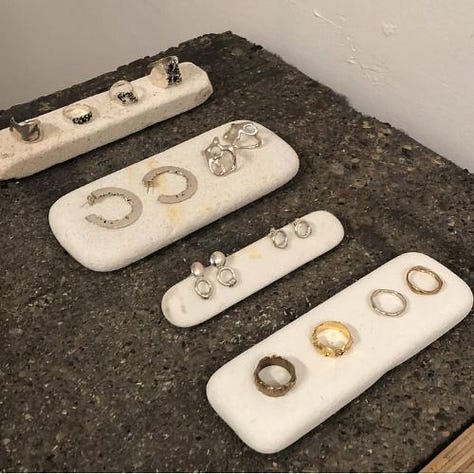

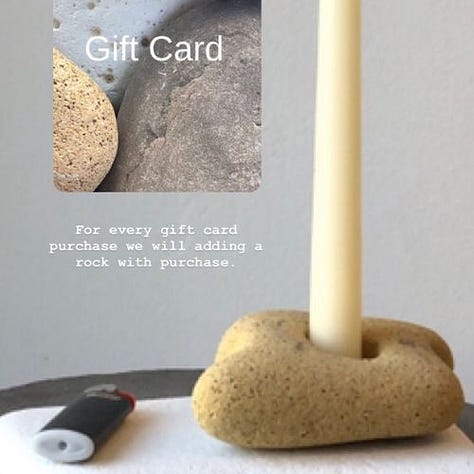
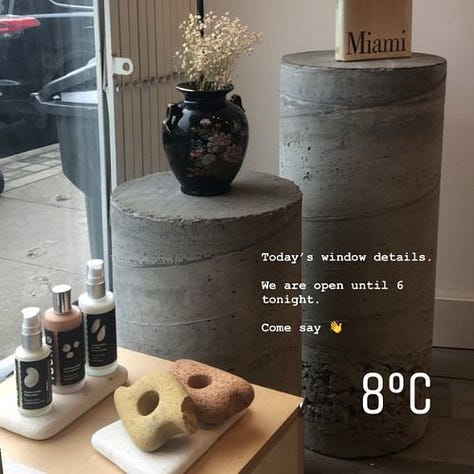
One thing I did was repurpose rocks throughout the entire store. I found them during a Saturday morning stroll at Leslie Spit—a strange, man-made peninsula in Toronto where construction debris meets nature. If you’ve been, you know exactly what I mean: chunks of concrete smoothed into river stones, bricks worn down to pebbles. Forgotten rubble that, with enough time, started to look like sculpture.
But I wasn’t just collecting them—I was curating them. They were stacked all around the shop as jewelry displays, turned into incense holders. I would stack them and light incense cones, dropping them into the crevices. At one point, I was even selling them—literal debris turned design objects. People bought them for toothbrush holders, soap dishes, joint storage, etc.
I know I am not the first person to “market” rocks but I definitely repositioned them, and I won’t be the last. But here’s what’s interesting: fast forward to now, and suddenly, rocks are everywhere. You’ll see them in luxury retail spaces, contemporary shops, and design studios. There are even resin replicas being sold as “perfectly imperfect” decor pieces.
How does something as ordinary as a rock become desirable? The answer: the food chain of cool. Let’s break it down.
The Cult of Curation
We know that trends start in small, hyper-specific pockets of culture—subcultures, curators, creative directors, artists, etc. essentially someone or niche group who sees value in something before the rest of the world.
The rock thing? For me, it wasn’t about sustainability, raw materials, or some deep philosophical rejection of modernity. It was about making “having nothing” look intentional.
This was broke minimalism—a rejection of over-designed spaces in favor of something raw, textured, and unpolished. But more than that, it was an unconscious return to childhood.
I grew up in a household that struggled financially—single mom, co-op housing. However, for some reason, I went to school and was placed in programs with kids from two-parent, six-figure-income households. So, I had to learn to see the value in everything. I became fluent in two different aesthetics. One was effortless curation; the other was forced creativity—taking whatever I had and making it feel considered.
I still do this in my home today. Notice the rocks? Other than my couch, bed, and essential appliances, everything in my space was sourced somehow. I even found that stack of Monocle magazines on a sidewalk once. When I’m back in Montreal, I’ll do a deep dive into my space.

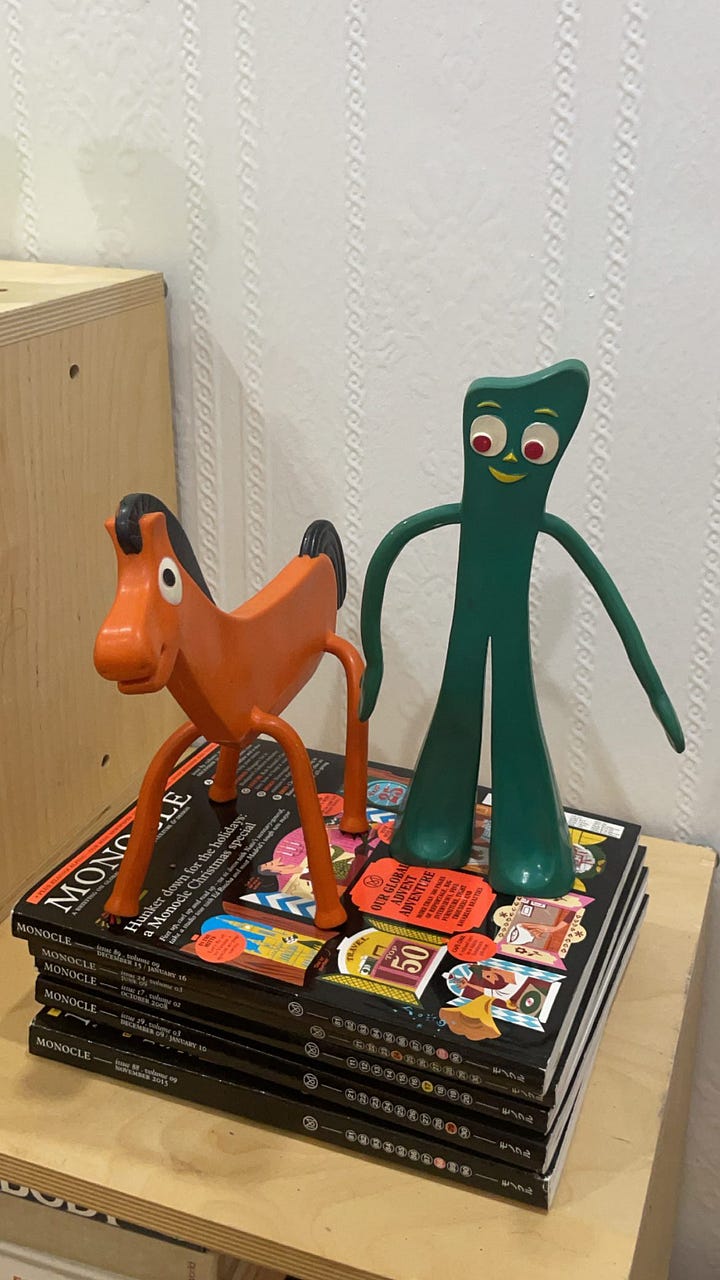

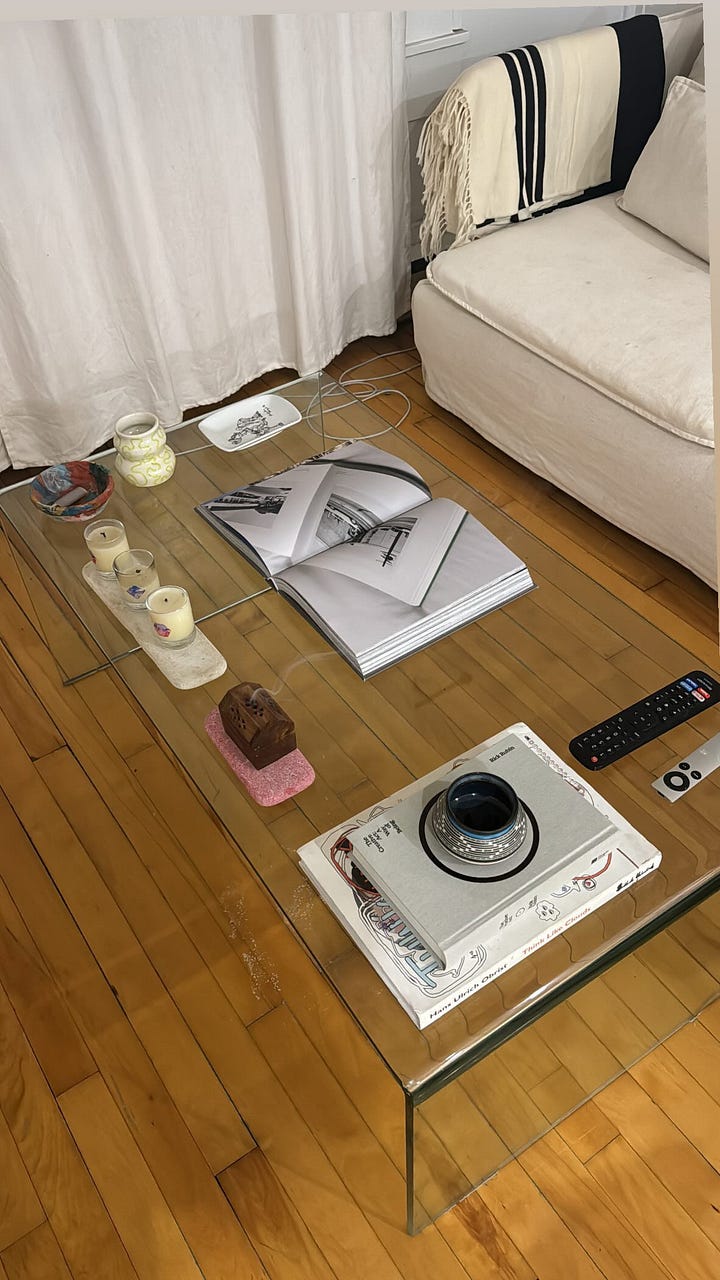
Maybe you can’t relate to my childhood, but think about it: as kids, we all collected things—rocks, shells, stickers, leaves—whatever felt special in the moment. We assigned meaning to objects. They felt rare, personal, tied to an experience. There was no marketing, no carefully crafted messaging designed to resonate with us.
Somewhere along the way, we lost that instinct. Now, companies spend millions trying to recreate those same feelings—packaging nostalgia and selling it back to us.
Right now, we’re seeing a return to primitive collecting—the desire to own things that feel real, tactile, and unprocessed. The resurgence of handmade ceramics, raw-edged textiles, “thrifted” objects, and, yes, even rocks isn’t just about aesthetics. You can see it happening on this platform too—people dedicating hours to creating “curated” letters for niche communities. It’s all an attempt to reconnect with something that feels human in a world that increasingly doesn’t.
The Niche Adoption Phase
When I closed my shop in February 2021, it became a running joke among my friends that I should have started a brand with the rocks. Soon after, I started seeing them pop up everywhere on my IG stories from people I follow in Toronto. I think word got out about where to find these rocks.
This is when tastemakers and subcultures start paying attention.
Before oat milk was in every coffee shop, it was a niche Scandinavian grocery find. Before Aesop was an IYKYK status symbol, it was a quiet obsession in design spaces. Before rocks ended up in curated retail spaces, they were just… rocks.
At first, it’s exclusive by accident. It’s hard to find, and that scarcity makes it desirable. Then, social media steps in.
The algorithm rewards novelty. It doesn’t care if something has a rich cultural backstory or was originally rooted in niche communities. It only cares about what stops people from scrolling.
The Branding of the Unbranded
Here’s where it gets interesting. When something niche gains traction, brands start assigning meaning to it. It stops being just a thing and starts being a symbol.
A rock isn’t just a rock anymore. It’s a product now. It goes from "found" to intentionally placed. The price tag changes. The language around it changes. It’s now a “design object,” a “meditative sculpture,” an “organic artifact”.
In May 2021, F.Miller x Jam launched a collection:
In September 2021, Maiden.Name (Great shop btw) in NYC launched a collection by Shane Gabier which are being sold for $220 USD (they are still available)


Photos from Maiden Name Wesbite
This is how branding works. It sells you the meaning, not the thing itself.
Which is why an empty Aesop bottle is selling for $20 on FB Marketplace. (Read Taste of Currency)
(Side note: I mention in the above letter Aesop should partner with a ceramist to make a soap vessel—I think Shane Gabier would be perfect.
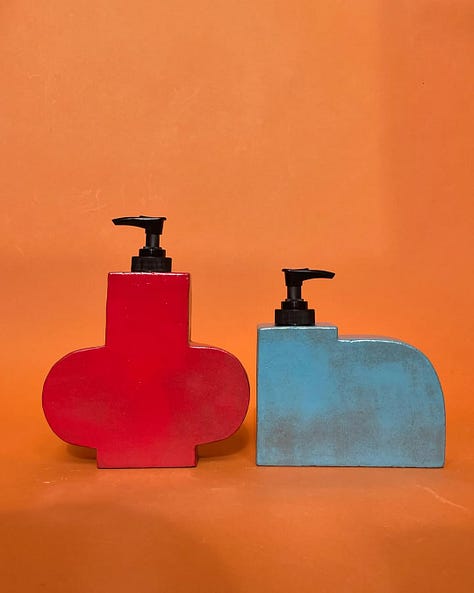
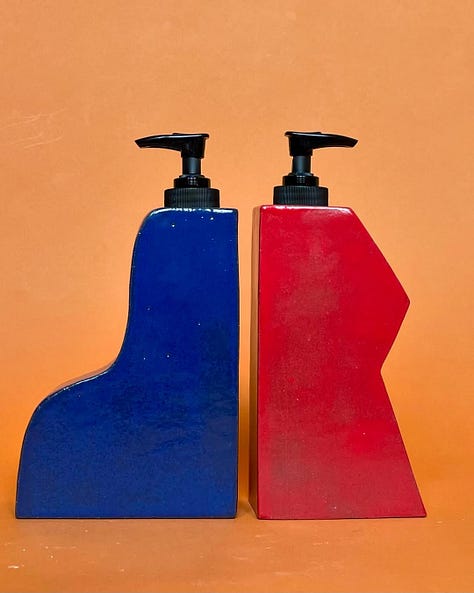

Mass Adoption & The Tipping Point
This is when:
We begin to see retailers start selling “curated” rocks—think UO, Target, etc. Then come the knockoffs, in this case, cheap resin casts of natural forms. This once-found object, which became a design piece in curated spaces, turns into a generic trend.
This is not inherently bad, but it marks the beginning of the end for early adopters. Once something becomes too widely available, it loses its cultural currency.
We’ve now hit peak saturation.
The Death (or Rebirth) of a Trend
Two things can happen next:
The trend fully dies. It moves from aspirational to cringe. (Think: chevron prints, "Live Laugh Love" signs.)
The trend reinvents itself. A new niche group reclaims it, repositions it, or alters it in some way to make it fresh again.
Oh, the food chain of cool… the cycle repeats itself endlessly, and we’re all complicit. We’re all constantly chasing that next "thing" or reinventing something in our own way—whether we realize it or not.
I share my trend predictions, random thoughts, and brand drops every Monday in my Screenshot & Saves series.
Remember, at the end of the day, we’re not just collecting objects—we’re collecting meaning. At least, that’s what I tell myself when I’m sourcing.
Curious—what’s the strangest thing you’ve seen become a trend? Or what’s something you still collect, even if it’s “uncool” now?
Next week’s letter:
Mondays: Continuing the series of Screenshots & Saves
Wednesday: I’ve identified who we are all influenced by…can’t wait to share
Friday: ADHD-Friendly Reads—What Makes Them Work?
Want to be featured on our weekly Screenshots & Saves? Email us nobodyknowsstudio@gmail.com or send me a DM at @justkeepcreeping






